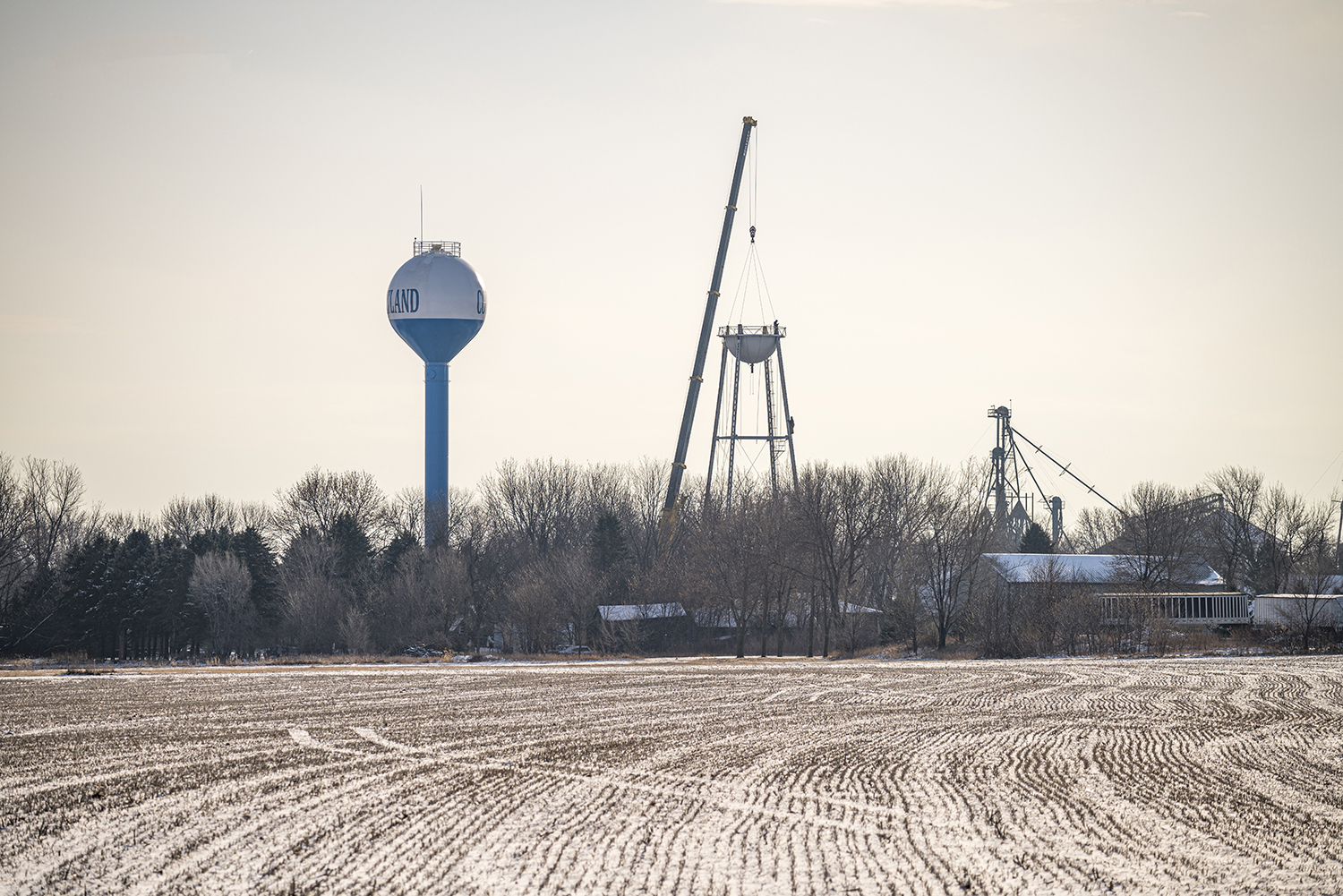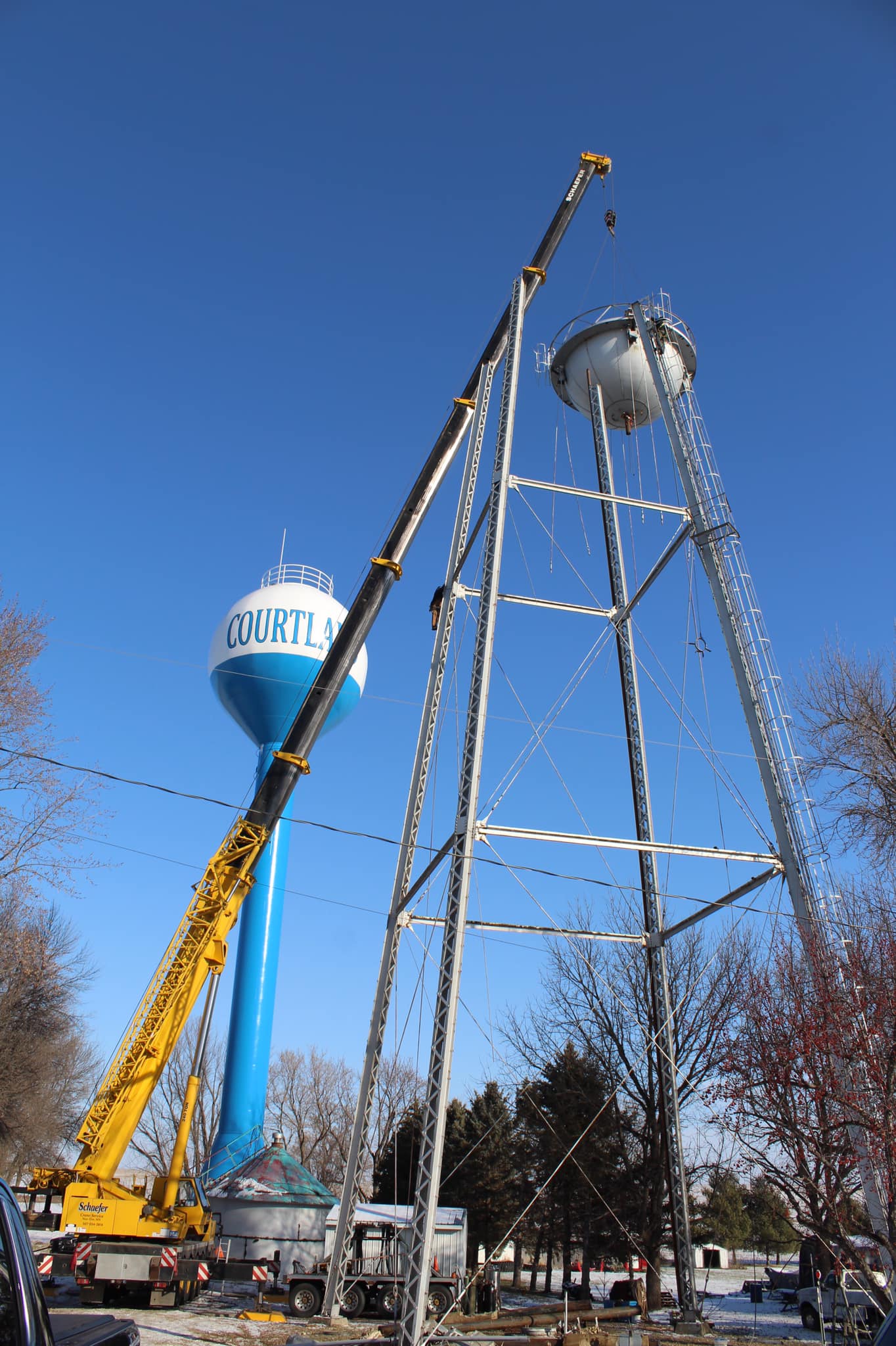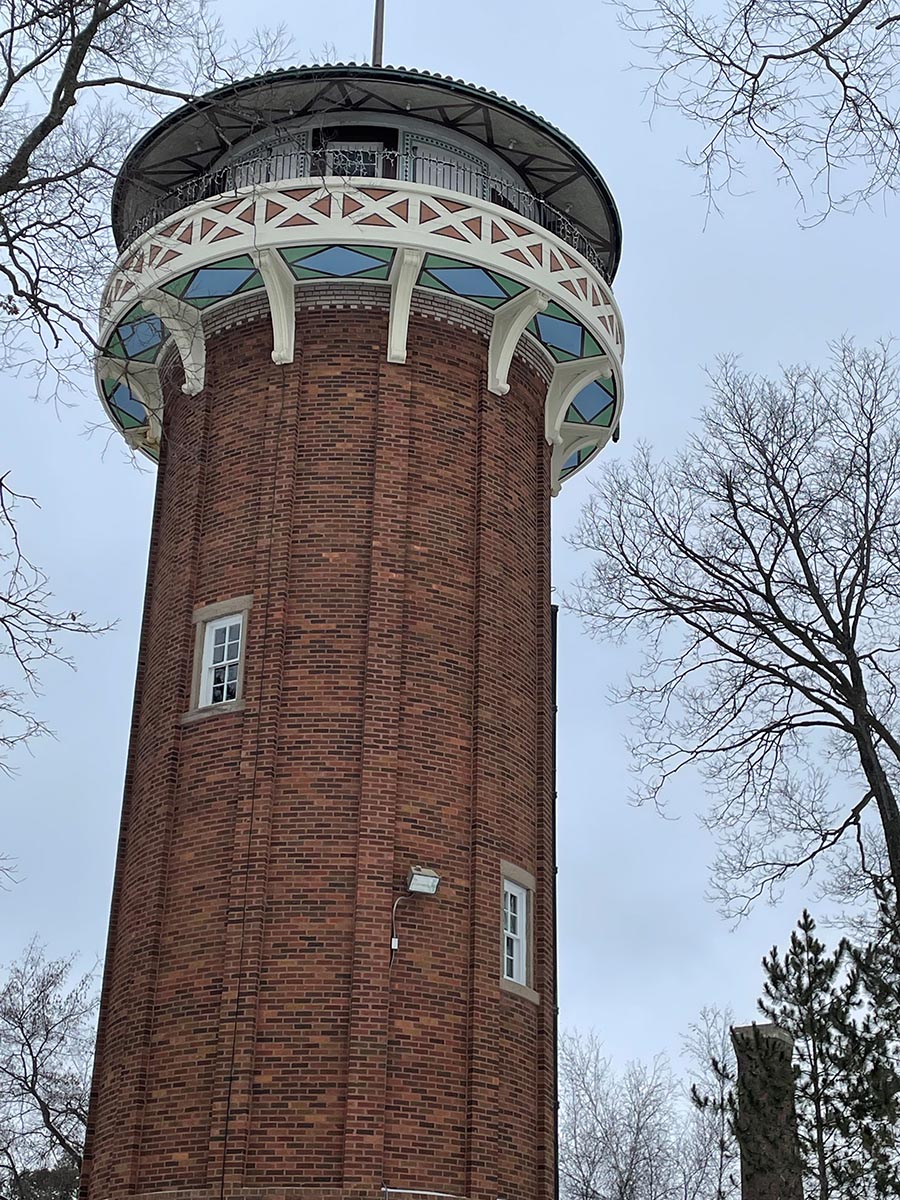Drinking Water Protection
- Drinking Water Protection Home
- About Us
- A-Z Index of Contaminants in Water
- Community Public Water Supply
- Drinking Water Grants and Loans
- Drinking Water Institute
- Drinking Water in Schools and Child Cares
- Drinking Water Revolving Fund
- Laws and Rules
- Noncommunity Public Water Supply
- Source Water Protection
- Water Operator and Certification Training
- Drinking Water Protection Contacts
Related Topics
- Annual Reports
- Drinking Water Risk Communication Toolkit
- Drinking Water Protection External Resources
- Fact Sheets
- Forms
- Invisible Heroes Videos: Minnesota's Drinking Water Providers
- Noncom Notes Newsletter
- Sample Collection Procedures (videos, pictures, written instructions)
- Waterline Newsletter
Related Sites
- 10 States Standards
- Clean Water Fund
- Health Risk Assessment – Guidance Values and Standards for Water
- Minnesota Well Index
- Water and Health
- Wells and Borings
Environmental Health Division
Waterline: Spring 2022

Editor:
Stew Thornley
Subscribe to The Waterline newsletter. An e-mail notice is sent out each quarter when a new edition is posted to the web site.
On this page:
- Water Towers: New, Old, and Both
- John Kriesel to be Keynote Speaker for 2022 Metro Water Operators School
- Blast from the Past: Waterline Roots
- Threats Highlight Need for Emphasis on Cybersecurity
- EPA Finishes Lead and Copper Revision, Plans Improvements
- Minnesota Water Research Funds Keep Flowing
- More Training Opportunities: WUTT and Drinking Water Institute
- Worth Watching: Minneapolis and St. Paul Water Treatment Videos
- Words to Live By
- Reminder to All Water Operators
- Calendar
Water Towers: New, old, and both

The west-central Minnesota city of Courtland recently replaced its water tower, an event commemorated by some scenic photos: the one above is by Mathew D. Sparlin Photography of New Ulm and the one below by Tiffany Hoffmann of the city of Courtland.


Another notable tower (left), which once held more than 24,000 gallons of water, has been spruced up in recent years. It was the namesake of Tower View Estate, the home of Alexander Pierce Anderson on U. S. Hwy. 61 in Burnside Township, which was annexed by Red Wing in the 1970s. Anderson is best remembered as the creator of the process for puffing cereal grains. In 1901, Anderson was able to heat corn starch to a temperature high enough to cause it to explode, thus turning the expanded starch granules into a porous puffed mass. He started the Anderson Puffed Rice Company and eventually received 25 patents for the puffing process and the machinery used in the manufacturing process. Anderson was self-sufficient (or, in today’s lingo, “off the grid”) on his estate, which contained his home, a farm, a research center, and the water tower. Anderson died in 1943, and the property has gone through different owners. It became the home of Central Research Laboratories in the 1940s and later a campus for Red Wing Vocational Technical College, which established an energy education center on the grounds.
In 1995, the site became the Anderson Center for Interdisciplinary Studies at Tower View, a center that supports artists through residency programs. “It’s for arts and ideas and how they intersect with other disciplines, such as science,” said Stephanie Rogers, the center’s executive director, who added that their objectives line up with A. P. Anderson’s values.
The tower, which hasn’t held water since the 1970s, is one of eight buildings on the estate listed on the National Register of Historic Places. In need of repairs, the tower underwent a five-year restoration project that began in 2016. The work—which included replacing concrete, rebuilding the circular balcony, and repainting—had to follow historic specifications. Another challenge was dealing with a 115-foot-high structure. “When working that high,” notes Rogers, “everything becomes more complicated.”
The balcony serves as an observation deck and surrounds the Tea Room, which is used for special events and as a studio for artists in residence. The restoration work was partially funded by the Minnesota Historical Society through the 2008 Minnesota Clean Water, Land and Legacy Amendment.
Go to top
John Kriesel to be Keynote Speaker for 2022 Metro Water Operators School

The Metro Water Operators School is back after a two-year absence because of COVID-19. It will be at the Earle Brown Heritage Center in Brooklyn Center from Tuesday, April 5 to Thursday, April 7, 2022.
The keynote speaker the opening morning will be John Kriesel (pictured at right), who is a former member of the Minnesota House of Representatives and currently a motivational speaker, author, and part-time personality on KFAN Radio. In 2006 Kriesel lost his legs in Iraq when an improvised explosive device detonated. He was at Walter Reed Army Medical Center for nine months and will share his stories and lessons with the water operators April 5. He is the author of the book, Still Standing: The Story of SSG John Kriesel, which will be available for purchase at the school.
Classes will cover half-day sessions on distribution, treatment, leadership, regulatory issues, operations, and emerging technologies.
The breakfast and lunch on Wednesday, April 6 will include speakers on the topics of an update on commercial driver’s licenses and on diversity and inclusion.
A study class for those taking the exams for Class C and D licenses will be Wednesday with exams for all classes on Thursday morning, April 7.
Special Session for Superintendents
The annual vendor exposition will be held Thursday morning along with mini-sessions and Gimmicks and Gadgets. In addition, all superintendents are invited to attend on Thursday morning at a discounted price, which includes admission to the vendor exposition, lunch, and a special session for supervisors and superintendents.
Other Spring 2022 Water Operator Schools
Southeast District School, March 9-11, Rochester International Event Center
Southwest District School, April 6, Redwood Area Community Center, Redwood Falls
Northeast District School, April 19-21, Timberlake Lodge, Grand Rapids
Registration information for all schools
Go to top
Blast from the past: Waterline Roots

Did you know . . . the Minnesota Department of Health's Waterline newsletter is almost as old as Tom Brady, who, like the Waterline, is still going strong? Above is the masthead from the first Waterline, which was edited by the incomparable Gunilla Montgomery. All Waterlines from 1978 to the present are in PDF format and available upon request. Those wishing to peruse past issues may contact Stew Thornley, stew.thornley@state.mn.us.
Go to top
Threats highlight need for emphasis on Cybersecurity
On December 16, 2021 a joint advisory was issued on Russian state-sponsored cyberoperations against critical infrastructure, including U. S. water and wastewater facilities and operations. The advisory was from the Federal Bureau of Investigation, National Security Agency, and the Cybersecurity and Infrastructure Security Agency (CISA). The groups stated that, “due to persistent cyber-threats from sophisticated actors, including nation-states and their proxies, critical infrastructure owners and operators should immediately strengthen their computer network defenses.”
In conjunction with the advisory, the U. S. Environmental Protection Agency (EPA) and the Water Information Sharing and Analysis Center (ISAC) held a series of webinars for water professionals. The webinars covered ways hackers gain initial access and exploit known vulnerabilities, such as patches that are available but not yet installed. “Russia knows we’re terrible at patching,” said Michael Arceneaux of ISAC.
- The webinar presenters offered a number of recommendations regarding ways to prevent cyberattacks and responses to an attack:
- Use long passwords (at least 18 characters) and do not reuse passwords nor variations of them. Andrew Hildick-Smith of Water ISAC says “Winter2021!” may meet minimum standards but “is a dud.” He recommends passphrases, such as “astrid#lunar68spitBALL,” which are long and complicated but that can be remembered.
- Back up data. Isolate backups from the network and rotate physical backup media offsite. Test the restoration process if the backups are needed.
- Surge support: Minimize gaps in staff coverage, especially during holiday seasons. Have a responder on retainer. Partner with neighboring utilities.
- As part of preparation, have contact information for staff and responders updated and readily available.
- In case of an attack, respond by isolating affected systems.
- Recovery, if there is an attack, involves eradication and restoration. Having paper copies of information may be important in these situations.
Other tips:
- Avoid pop-ups and emails from suspicious or unknown people.
- Check the URL of sites. Type in a URL rather than clicking on the first link found in a search engine.
- Keep your software updated.
- Be aware of the latest cybersecurity trends and new malware.
More information:
American Water Works Association on Cybersecurity
EPA Cybersecurity Best Practices for the Water Sector
Want a scary story? Read The President Is Missing by James Patterson and Bill Clinton for an eye-opening look at the possible magnitude of a cyberattack.
Go to top
EPA finishes Lead and Copper Rule Revision, plans improvements
The U. S. Environmental Protection Agency (EPA) released the final version of the Lead and Copper Rule Revisions (LCRR) in December, the first major update to the Lead and Copper Rule in nearly 30 years. The LCRR is designed to support near-term actions with the EPA also announcing a series of enhancements it envisions over the next few years. The focus of the Lead and Copper Rule Improvements (LCRI) includes replacing all lead service lines and more equitably protecting public health by prioritizing communities that have been historically underserved.
The LCRR requires public water systems to identify and make public the locations of lead service lines by developing lead service line (LSL) inventories by October 16, 2024 (and the current LCR will be in effect until then). It is also establishing a trigger level of 10 parts per billion (the lead action level is 15 ppb) that requires systems that already have corrosion control to re-optimize their treatment and for systems without corrosion control to conduct a corrosion control study to identify the best treatment approach. The Minnesota Department of Health (MDH), which has seen few exceedances of the lead action level in recent years, plans to reach out to systems that have approaching 10 ppb to help head off exceedances.
Karla Peterson, supervisor of the Community Public Water Supply Unit at MDH, says water systems must contact MDH before beginning any treatment changes in corrosion control optimization.
The LCRR also mandates testing in schools and child-care facilities served by community water systems. Minnesota has already had a program in place that addresses schools.
The Minnesota Rural Water Association (MRWA) also provides assistance for water systems. John Nelson is MRWA’s technical advisor for lead and copper (and is known as the “boots-on-the-ground guy”). Along with MDH district engineers, Nelson will advise systems, especially with their communication with schools that receive water from a public water system. “Schools need to understand how they use water and their plumbing,” said Nelson, who outlined some of the challenges that schools face. They include mixed plumbing materials from new and old plumbing, the grounding of electric circuits to plumbing, irregular water usages because of vacations and long weekends, and the lack of a building management plan for water.
For more information, contact John Nelson, john.nelson@mrwa.com, or Michael Bourland of MDH, michael.bourland@state.mn.us.
Money Available
With the recent passing of the Infrastructure Investment and Jobs Act, a large influx of federal dollars will be coming to Minnesota for lead service line replacement. All LSL replacement funding will be channeled through the Drinking Water Revolving Fund (DWRF). Currently, grant funds are available for replacement of the privately-owned portion of an LSL. State legislative changes are being proposed to allow the grant funds to be used for LSL replacements regardless of ownership. As of now, the federal dollars would be limited to a 49 percent grant and 51 percent below-market-rate loan through DWRF. Public water systems need to apply for the funds and can determine how they want to structure the funding package for their customers. Property owners cannot directly apply for funding. The application deadline for DWRF is May 6, 2022. More details about how to apply: Drinking Water Revolving Fund Project Priority List
Fact Sheets
The New Lead and Copper Rule (PDF)
MDH Lead and Copper Rule Revisions
Lead Service Line inventories are public information and will be required to be in Consumer Confidence Reports. Systems serving populations of greater than 50,000 will also have to make the information available on-line. A good resource for this and other data on is the the
Minnesota Infrastructure Stress Transparency Tool.
And There's More!!!
In other lead news, the Biden administration announced a Lead Pipe and Paint Action Plan, which outlines initiatives among federal agencies to reduce lead in water, air, and paint in schools and homes. The actions include collaboration with local, state, and federal partners to accelerate the replacement of lead pipes over the next decade; the EPA launching a new regulatory process to protect communities from lead in drinking water; the EPA and Department of Labor establishing regional technical assistance hubs to fast track lead service line removal projects in partnership with labor unions and local water agencies; and the Centers for Disease Control closing gaps in childhood lead testing through the Childhood Lead Poisoning Prevention Program.
Go to top
Minnesota Water Research funds keep flowing
The Minnesota Water Research Fund (MWRF), established in 2015 by Bernie Bullert, continues to provide support for for water research done by faculty and students in the University of Minnesota’s Department of Civil, Environmental, and Geo- Engineering. More than 25 individuals and organizations have joined Bullert in supporting the Minnesota Water Research Fund and awards are being distributed to support research. To learn more about participating in or benefiting from research generated from these efforts, go to Minnesota Water Research Fund.
Go to top
More training opportunities
Water-Wastewater Utilities Treatment and Technology (WUTT) Program
Two modules are currently underway, with more planned, in the Water-Wastewater Utilities Treatment and Technology (WUTT) program. WUTT is a series of non-credit water and wastewater modules taught at St. Paul College. Students who complete the modules will be able to get water operator certificates and jobs with water utilities. In addition to full modules for new students and people entering the industry, individual courses within a module are available for existing water-wastewater operators for advanced training and education that could lead to promotional opportunities with their current employers. For more information, contact Carol Kaszynski, carol.kaszynski@ci.stpaul.mn.us.
Drinking Water Institute Set for Red Wing in August
After a two-year absence because of COVID, the Drinking Water Institute for Educators is set to resume this summer. The Minnesota Department of Health and Minnesota Section of American Water Works Association have been conducting these institutes since 2001. Science teachers from around the state gather and develop action plans to create inquiry-based activities that they can integrate their existing science curriculum. The 2022 Drinking Water Institute will be held from Monday, August 1 to Wednesday, August 3 at the Twin Bluff Water Treatment Facility in Red Wing. A follow-up session at a to-be-determined location will be held in the fall. A special feature of this year’s institute will be a tour of the Anderson Center and its renovated water tower (as featured above).
The Institute is free to Minnesota science teachers, who may receive two college credits for their participation.
More information: WaterWorks! A Drinking Water Institute for Educators
Go to top
Worth Watching: Minneapolis and St. Paul Water Treatment videos
City of Minneapolis Drinking Water Treatment System
St. Paul Regional Water Services Drinking Water: Where It Comes From and How It's Treated
Go to top
Words to live by
You can’t be an important and life-changing presence for some people without also being a joke and an embarrassment to others.
—Mark Manson from The Subtle Art of Not Giving a #@%!
Make Your Own Kind of Music.
—Cass Elliot
A real patriot is the fellow who gets a parking ticket and rejoices that the system works.
—Bill Vaughan
Go to top
Reminder to all water operators
When submitting water samples for analyses, remember to do the following:
- Take coliform samples on the distribution system, not at the wells or entry points.
- Write the Date Collected, Time Collected, and Collector’s Name on the lab form.
- Attach the label to each bottle (do not attach labels to the lab form).
- Include laboratory request forms with submitted samples.
- Do not use a rollerball or gel pen (the ink may run).
- Consult your monitoring plan(s) prior to collecting required compliance samples.
Notify your Minnesota Department of Health district engineer of any changes to your systems.
If you have questions, call the Minnesota Department of Health contact on the back of all sample instruction forms.
Go to top
Calendar
Operator training sponsored by the Minnesota Department of Health and the Minnesota AWWA will be held in several locations this spring.
Register for schools and pay on-line:
Go to top